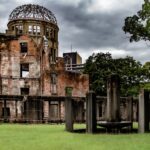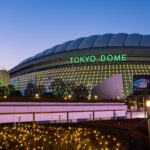Does Japan celebrate Thanksgiving?

Does Japan Celebrate Thanksgiving?
When people think about November holidays, Thanksgiving in the United States and Canada often comes to mind: a big turkey dinner, family gatherings, football games, and a long weekend. But what happens in Japan at that time of year? Does Japan celebrate Thanksgiving too?
The short answer is: Japan does not celebrate Thanksgiving in the same way as the United States or Canada. However, Japan does have a national holiday in late November that is sometimes compared to Thanksgiving: Labor Thanksgiving Day (Kinro Kansha no Hi). In addition, Western-style Thanksgiving events are slowly becoming more visible in big cities due to international communities and global companies.
This article explains how Thanksgiving is understood in Japan, what Labor Thanksgiving Day is, and what visitors or foreign residents can expect in late November.
No Traditional Thanksgiving Like in the United States or Canada
In the United States, Thanksgiving is one of the biggest family holidays of the year. In Canada, Thanksgiving is also an important autumn holiday, though it is celebrated in October instead of November.
Key features of North American Thanksgiving include:
- A large turkey dinner with stuffing, gravy, mashed potatoes, cranberry sauce, and pumpkin pie
- Family members traveling long distances to gather together
- A strong focus on giving thanks for the harvest and for good things in life
- Major sales events like Black Friday right after the holiday
Japan does not have this tradition. There is no long history of eating turkey, no nationwide day when families gather for a Thanksgiving meal, and no specific Japanese word that is a perfect match for “Thanksgiving” as a cultural event.
However, this does not mean that nothing similar exists. Japan has its own way of expressing gratitude for work, harvest, and everyday life.
Labor Thanksgiving Day (Kinro Kansha no Hi)
On November 23, Japan has a national holiday called Kinro Kansha no Hi, usually translated as Labor Thanksgiving Day.
What is Labor Thanksgiving Day?
Labor Thanksgiving Day is a public holiday to honor workers, celebrate production, and give thanks for one another’s contributions to society. Government offices, many companies, schools, and banks are closed, and many people get a day off. If the date falls near a weekend, it can create a three-day weekend, which people often use for short trips or family time.
Although the English name includes the word “Thanksgiving,” the mood and customs are quite different from American Thanksgiving. There is no traditional national meal, no fixed menu, and no strong expectation that everyone goes back to their family home.
Historical Roots: From Harvest Ritual to Modern Holiday
The origin of this holiday goes back to an ancient imperial ritual called Niinamesai, a harvest festival in which the Emperor offered the first rice of the new harvest to the gods and then ate it himself. This ceremony expressed gratitude for a successful harvest and prayed for the nation’s well-being.
After World War II, under Japan’s new constitution and with influence from the Allied occupation, this traditional harvest ritual was transformed into a modern, democratic holiday. The focus shifted from thanking the gods for the harvest to honoring workers, production, and human rights. The name Labor Thanksgiving Day was adopted, and November 23 became a day to celebrate labor and express thanks to each other.
Today, the imperial Niinamesai ceremony still exists as a religious event within the imperial household, but ordinary people mainly experience November 23 as a secular public holiday.
How Do People Spend Labor Thanksgiving Day?
For most people in Japan, Labor Thanksgiving Day is a simple day off rather than a deeply symbolic event. Common ways to spend the day include:
- Relaxing at home
- Going shopping or to restaurants
- Taking a short trip or going for a drive to see autumn leaves
- Attending local events or festivals if any are held
Some schools and communities use the day as an opportunity to thank workers in their area. For example, children might write thank-you letters to police officers, firefighters, or sanitation workers, or local governments might hold small ceremonies to recognize workers’ contributions.
However, there is no single, nationwide custom comparable to the turkey dinner in the United States.
Do Japanese People Eat Turkey On Thanksgiving?
In general, no. Turkey is not a common meat in Japan. Most supermarkets do not sell whole turkeys, and ovens in Japanese homes are often too small to roast a large bird.
That said, in big cities like Tokyo, Osaka, and Yokohama, some international supermarkets, hotels, and restaurants offer special Thanksgiving menus aimed at foreigners. These may include:
- Roast turkey (or chicken as a substitute)
- Stuffing and gravy
- Mashed potatoes
- Pumpkin-based desserts
International schools, embassies, and foreign community groups sometimes organize Thanksgiving dinners as well. These events are usually targeted at Americans, Canadians, and their friends or colleagues who want to enjoy a familiar holiday meal while living in Japan.
So while turkey is not part of ordinary Japanese life, it can be found in limited ways around late November in places that cater to international residents.
Thanksgiving-Inspired Events and Black Friday Sales
Another way Thanksgiving influences Japan is through shopping culture. In recent years, more Japanese retailers have begun to use the phrase “Black Friday” for sales in late November.
In the United States, Black Friday is the day after Thanksgiving and marks the start of the Christmas shopping season. In Japan, even though there is no Thanksgiving in the American sense, some big chains have adopted the concept of a late-November sale to attract customers.
Examples include:
- Large shopping malls promoting “Black Friday” discounts
- Online stores running special campaigns
These sales are marketing events rather than a reflection of any deep cultural connection to American Thanksgiving, but they show how global trends can influence Japanese consumer behavior.
Is Labor Thanksgiving Day the Japanese Version of Thanksgiving?
It is tempting to say that Labor Thanksgiving Day is “Japan’s Thanksgiving” because of the similar timing in late November and the use of the word “Thanksgiving” in English translations. However, there are important differences.
Similarities:
- Both occur in late autumn.
- Both have historical ties to harvest and production.
- Both involve the idea of giving thanks.
Differences:
- American and Canadian Thanksgiving centers on a specific family meal and strong family traditions; Labor Thanksgiving Day does not.
- Labor Thanksgiving Day focuses on workers, production, and human rights, reflecting modern democratic values.
- There is no traditional food or fixed custom in Japan tied to the day.
A more accurate way to think about it is: Labor Thanksgiving Day is a modern Japanese holiday with its own history and meaning. It happens to fall at roughly the same time of year as American Thanksgiving and shares the general theme of “gratitude,” but it is not a copy or direct equivalent.
Other Japanese Holidays That Emphasize Gratitude and Family
If you are looking for Japanese holidays that carry a similar emotional weight to American Thanksgiving, it may be more helpful to look at other parts of the calendar.
Obon (August)
Obon is a Buddhist-influenced tradition, usually in mid-August, when people honor the spirits of their ancestors. Many people travel back to their hometowns, visit family graves, and spend time with relatives. Trains and highways are very crowded, similar to the busy travel seen in the United States around Thanksgiving and Christmas.
Although the theme is different, the idea of returning to one’s roots and spending time with family feels somewhat similar.
New Year (Oshogatsu)
The New Year period is arguably the most important holiday season in Japan. From January 1 to around January 3, many businesses close, and people gather with family, eat special New Year dishes (osechi ryori), visit shrines or temples, and relax.
The role New Year plays in Japan is similar to the combined importance of Christmas and New Year in Western countries. For those familiar with Thanksgiving, the family-centered feeling of Japanese New Year may feel more familiar than Labor Thanksgiving Day.
What To Expect If You Are in Japan in Late November
If you visit or live in Japan in late November, here is what you can expect around Labor Thanksgiving Day and the time when Americans are celebrating Thanksgiving.
- Trains and roads may be somewhat busier than usual if the holiday creates a three-day weekend, but it is usually not as crowded as Obon or New Year.
- Most shops, restaurants, and tourist attractions remain open.
- You may see some “Black Friday” style sales in shopping centers.
- In large cities you might find Western-style Thanksgiving dinners at hotels, international restaurants, churches, or community centers.
- The weather is often cool and pleasant, with beautiful autumn leaves in many regions.
For many Japanese people, it is simply a nice autumn holiday: a chance to rest, enjoy the season, and spend time with friends or family in a relaxed way.
How Foreign Residents in Japan Handle Thanksgiving
Foreign residents from the United States or Canada often choose one of several options:
- Hosting their own Thanksgiving meal at home with friends, using chicken or smaller turkey pieces if a whole bird is hard to find.
- Booking a seat at a hotel or restaurant offering a Thanksgiving buffet.
- Doing a “potluck” style party where each person brings a dish.
- Treating Labor Thanksgiving Day as just another day off and scheduling a video call with family back home.
In international schools and some English conversation schools, teachers may use the season as a chance to introduce students to the idea of Thanksgiving, teach related vocabulary, or have cultural activities. This spreads awareness of Thanksgiving as a foreign custom, even if it does not become a personal tradition for most students.
Summary: Thanksgiving In Japan, In Simple Terms
To sum up:
- Japan does not celebrate Thanksgiving in the North American sense. There is no nationwide tradition of turkey dinners or family reunions in late November.
- Japan does have Labor Thanksgiving Day on November 23, a national holiday that celebrates workers, production, and mutual gratitude. It has historical roots in ancient harvest ceremonies but functions today as a modern, secular holiday.
- American-style Thanksgiving meals and gatherings exist in Japan mainly within international communities, at some hotels and restaurants, and at international schools and churches.
- If you are in Japan in late November, you can enjoy a peaceful autumn holiday, some seasonal sales, and perhaps a special Thanksgiving dinner if you seek it out in major cities.
In other words, Japan does not have “Thanksgiving” in the same way as the United States or Canada, but gratitude for work, harvest, and family is certainly present in Japanese culture, just expressed through different holidays and customs throughout the year.










